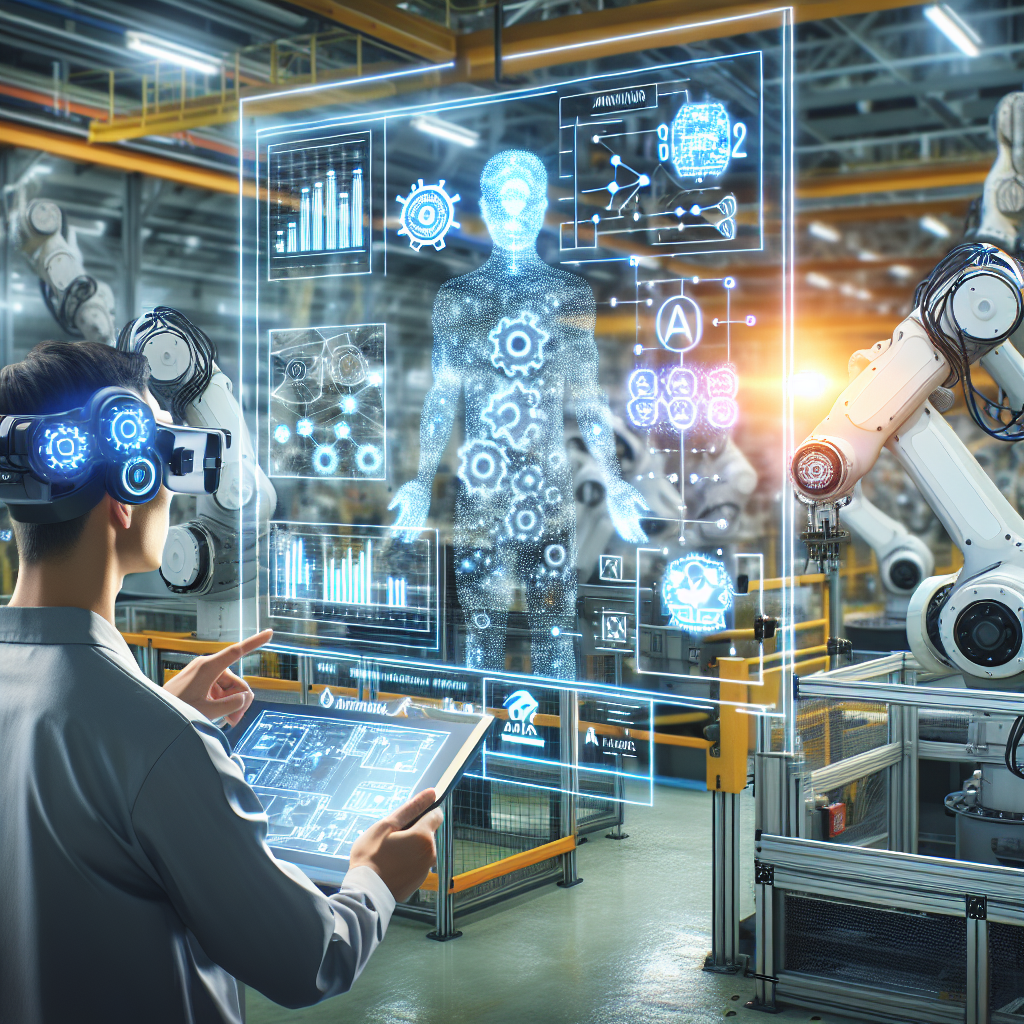In recent years, the integration of artificial intelligence (AI) and augmented reality (AR) in manufacturing has revolutionized the way products are designed, produced, and maintained. This powerful combination of technologies has enabled manufacturers to improve efficiency, reduce costs, and enhance the overall quality of their products. In this article, we will explore the benefits of integrating AI and AR in manufacturing, as well as some common FAQs about this rapidly evolving field.
Benefits of AI and AR in Manufacturing
1. Improved Efficiency: AI algorithms can analyze vast amounts of data in real-time to optimize manufacturing processes. By using AI-powered predictive maintenance, manufacturers can reduce downtime and prevent costly equipment failures. AR can provide real-time guidance to workers, helping them complete tasks more efficiently and accurately.
2. Cost Reduction: AI can help manufacturers identify inefficiencies in their operations and suggest ways to streamline processes. By using AR for training purposes, companies can reduce the need for expensive physical prototypes and training materials. This can lead to significant cost savings in the long run.
3. Enhanced Product Quality: AI can analyze product data to identify potential defects early in the manufacturing process. By using AR for quality control inspections, manufacturers can detect issues quickly and make corrections before products are shipped to customers. This can help improve overall product quality and customer satisfaction.
4. Remote Assistance: AR technology allows experts to provide remote assistance to workers in the field. By using AR-enabled smart glasses or mobile devices, technicians can receive real-time guidance and support from experts located anywhere in the world. This can help reduce travel costs and downtime, as well as improve the speed and accuracy of repairs.
5. Worker Safety: AR can provide workers with real-time safety information, such as warnings about potential hazards or instructions on how to safely operate machinery. By using AI to analyze data from sensors and cameras, manufacturers can proactively identify safety risks and take preventive measures to protect workers from accidents.
FAQs about AI and AR in Manufacturing
Q: What is the difference between AI and AR in manufacturing?
A: AI refers to the use of algorithms and machine learning to analyze data and make decisions. In manufacturing, AI can be used to optimize processes, predict maintenance needs, and improve product quality. AR, on the other hand, overlays digital information onto the physical world, allowing workers to interact with virtual objects in a real-world environment. In manufacturing, AR can be used for training, maintenance, and quality control purposes.
Q: How can AI improve manufacturing processes?
A: AI can analyze vast amounts of data in real-time to identify patterns and trends that humans may not be able to detect. By using AI algorithms, manufacturers can optimize production schedules, predict equipment failures, and improve overall efficiency. AI can also help manufacturers make better decisions by providing insights based on data analysis.
Q: What are some examples of AI and AR applications in manufacturing?
A: Some examples of AI and AR applications in manufacturing include predictive maintenance, virtual prototyping, remote assistance, and quality control inspections. Predictive maintenance uses AI algorithms to analyze equipment data and predict when maintenance is needed to prevent costly breakdowns. Virtual prototyping allows designers to create and test product designs in a virtual environment before manufacturing physical prototypes. Remote assistance uses AR technology to provide real-time guidance to workers in the field, while quality control inspections use AR to detect defects and ensure product quality.
Q: How can manufacturers implement AI and AR in their operations?
A: Manufacturers can start by identifying areas in their operations where AI and AR technologies can be beneficial. They can then invest in the necessary hardware and software, such as AI algorithms, AR-enabled devices, and training programs for workers. Manufacturers should also work with experts in AI and AR to develop customized solutions that meet their specific needs and goals.
Q: What are the challenges of integrating AI and AR in manufacturing?
A: Some of the challenges of integrating AI and AR in manufacturing include the high cost of implementing new technologies, the need for specialized skills and training, and concerns about data security and privacy. Manufacturers may also face resistance from workers who are unfamiliar with AI and AR technologies or who are concerned about job displacement. Overcoming these challenges requires careful planning, investment in training programs, and clear communication with employees about the benefits of AI and AR in manufacturing.
In conclusion, the integration of AI and AR in manufacturing has the potential to transform the way products are designed, produced, and maintained. By leveraging the power of AI algorithms and AR technology, manufacturers can improve efficiency, reduce costs, enhance product quality, and ensure worker safety. As this field continues to evolve, manufacturers must stay informed about the latest developments and explore how AI and AR can benefit their operations. By embracing these technologies, manufacturers can gain a competitive edge in today’s rapidly changing marketplace.

